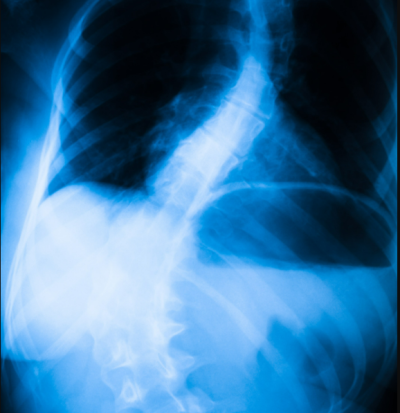Every month, JBJS publishes a review of the most pertinent and impactful studies from the orthopaedic literature during the previous year in 14 subspecialty areas. The authors of the most recent “What’s New in Pediatric Orthopaedics” selected the 5 most clinically compelling findings from among the studies highlighted in their article.
Lower-Extremity Fractures
– A recent study compared fixation with lag screws alone versus traditional plate fixation in the treatment of adolescents with unstable lateral malleolar fractures1. In this series of 83 patients, both groups had a union rate of 100% without a loss of reduction. The mean surgical time was greater in the plate group (64 minutes versus 49 for the lag screw group; p = 0.001). The plate group was also 3.8 times more like to have implant-related symptoms (p < 0.044).
Early-Onset Scoliosis
– Among 8 to 11-year-old patients with early-onset scoliosis, investigators compared treatment with use of magnetically controlled growing rods, posterior spinal fusion, or vertebral body tethers2. Quality-of-life improvements were found for patients treated with spinal fusion and vertebral body tethers but not with magnetically controlled growing rods. The complication rate was lower for patients who underwent fusion (14%) than for those treated with vertebral body tethers (27%) or magnetically controlled growing rods (61%) (p < 0.0005).
Cerebral Palsy
– A recent study found that, in children <5 years of age with cerebral palsy, the femoral head-shaft angle is not a predictor of hip displacement3. Patients were recruited from a population-based hip surveillance program; 101 children at Gross Motor Function Classification System (GMFCS) levels III to V were included. The mean age at the time of the primary radiograph was 2.4 years, and the mean follow-up was 4.3 years.
– Other investigators evaluated the cost-effectiveness of surgical release compared with botulinum toxin injections in treating upper-extremity cerebral palsy4. They found that surgery provided a greater benefit at a lower cost, thus suggesting that botulinum toxin injections be used sparingly in this population.
Slipped Capital Femoral Epiphysis
– A recent study assessed patterns of articular cartilage damage in patients undergoing surgical hip dislocation for the sequelae of slipped capital femoral epiphysis (SCFE) compared with patients undergoing arthroscopic surgery for primary femoroacetabular impingement5. More diffuse cartilage injury was found in the SCFE group. The authors concluded that their findings may support early surgical intervention for patients with symptomatic sequelae of SCFE because of the risk of premature joint damage.
To access the full text of the newest “What’s New in Pediatric Orthopaedics,” click here.
A collection of previous “What’s New” articles by subspecialty can be found here.
References
- Paez CJ, Lurie BM, Bomar JD, Upasani VV, Pennock AT. Plate versus lag screw only fixation of unstable ankle fractures involving the fibula in adolescent patients. J Pediatr Orthop. 2021 Feb 1;41(2):e161-6.
- Mackey C, Hanstein R, Lo Y, Vaughan M, St Hilaire T, Luhmann SJ, Vitale MG, Glotzbecker MP, Samdani A, Parent S, Gomez JA; Pediatric Spine Study Group. Magnetically controlled growing rods (MCGR) versus single posterior spinal fusion (PSF) versus vertebral body tether (VBT) in older early onset scoliosis (EOS) patients: how do early outcomes compare? Spine (Phila Pa 1976). 2021 Oct 1. [Epub ahead of print].
- Terjesen T, Horn J. The femoral head-shaft angle is not a predictor of hip displacement in children under 5 years with cerebral palsy: a population-based study of children at GMFCS Levels III-V. J Pediatr Orthop. 2021 Sep 1;41(8):e659-63.
- Kazarian GS, Van Heest AE, Goldfarb CA, Wall LB. Cost comparison of botulinum toxin injections versus surgical treatment in pediatric patients with cerebral palsy: a Markov model. J Hand Surg Am. 2021 May;46(5):359-67.
- Lieberman EG, Pascual-Garrido C, Abu-Amer W, Nepple JJ, Shoenecker PL, Clohisy JC. Patients with symptomatic sequelae of slipped capital femoral epiphysis have advanced cartilage wear at the time of surgical intervention. J Pediatr Orthop. 2021 Jul 1;41(6):e398-403.



